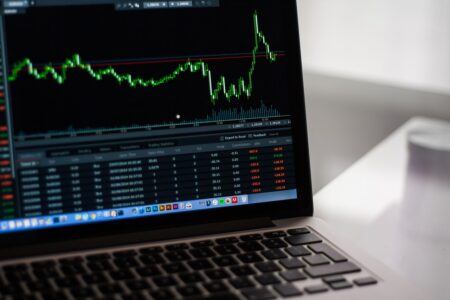In this article we compare the Q1 2020 performance of Bitcoin, the world’s most valuable cryptocurrency (by market cap), with that of Chainlink (LINK), one of the hottest altcoins of 2019 and 2020.
Let’s start by looking at the following two price charts (BTC-USD and LINK-USD) from CryptoCompare:


For the Q1 2020, here is how Bitcoin and Chainlink fared against USD:
- Bitcoin: went from $7,183 at the start of the year to $6,423 on 31 March 2020, i.e. it went down 10.58%
- Chainlink: went from $1.76 at the start of the year to $2.26 on 31 March 2020, i.e. it went up 28.40%
Earlier this month, on-chain market intelligence startup Glassnode has talked about both Chainlink and Bitcoin:
📈 $LINK Total Number of Addresses just went above 300,000.
Current value: 300,015
View metric:https://t.co/r4n43P068p pic.twitter.com/D5G7b0ibP9
— glassnode alerts (@glassnodealerts) April 6, 2020
1,838 entities hold over 1,000 $BTC – a level not seen since the market top in 2017.https://t.co/VmLzMGmcqJ pic.twitter.com/994SWz1EXU
— glassnode (@glassnode) April 8, 2020
And on Saturday (April 11), Forbes noticed that Bitcoin “challenger” Chainlink is “suddenly soaring and fast approaching its all-time high price.”
As Forbes points out, on April 9, Nicolas Contasti, Head of Business Development at blockchain intelligence startup IntoTheBlock, wrote a Medium blog post that offered the following conclusion:
“IntoTheBlock’s indicators provide an accurate view of the status of Chainlink through these difficult times with tons of On-Chain data that only shows positivism for the asset.
“That, and the added benefit of Chainlink’s ability to have really strong partnerships of the likes as Google, Oracle, Town Crier, Aelf, Binance, and Celsius Network, amongst others, are certainly a major bullish sign that most investors won’t miss in the coming months.”
We can IntoTheBlock’s indicators/signals for Chainlink if we go to the “analysis” tab on the price information page for Chainlink on the CryptoCompare website:

Here is how CryptoCompare, which entered into a strategic partnership with IntoBlockBlock on March 10, explains the meaning/significance of these signals:
“Net Network Growth (Signal) — A momentum signal that gives an indication of the token’s underlying network health by measuring the number of new addresses minus the addresses that have their balances emptied. It is bullish when more addresses are being created than emptied.”
“Large transactions (Signal) — A momentum signal that is bullish when the short term trend of the number of txs > $100k is greater than the long term average.”
“Concentration (Signal) — The Concentration signal is based on the accumulation (bullish) or reduction (bearish) of addresses with more than 0.1% of the circulating supply (large investors) as well as addresses holding 1%+ (whales).”
“In the Money (Signal) — This momentum signal calculates the net change of in/out of the money addresses. If the number of “In the Money” addresses is increasing — this would be a bullish signal. “In The Money” refers to addresses that would make a profit on the tokens they hold, because they acquired the tokens at a lower price.”
Featured Image by “thommas68” via Pixabay.com









